Share the post "What is a Penalty Kick in Soccer? (Must-Know Rules)"
Penalty kicks, also known as penalties or PKs, provide some of soccer’s most exciting and dramatic moments. The teams are tied with minutes to go in the game.
The attacking team surges into the opposition penalty box, and one of their players is brought to the ground.
The crowd roars, demanding a penalty. The referee blows their whistle and points to the spot. The crowd goes crazy!
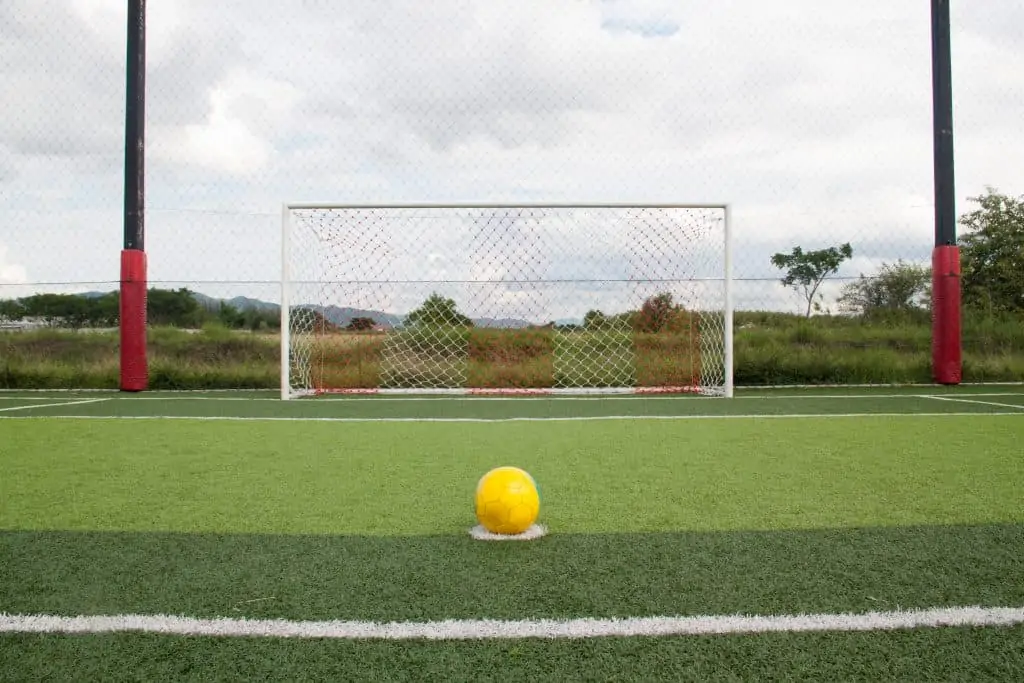
- What is a penalty kick in soccer?
- When a Penalty Kick Given
- Steps To Take A Penalty Kick
- How to Take a Penalty Kick in Soccer: Technique
- Penalty Kick Shootouts: What Happens
- Penalty Kick Shootout Rules: How it Works
- History of the Penalty Kick
- Why was the penalty kick invented?
- Best Soccer Penalties
What is a penalty kick in soccer?
Penalties are awarded when a player commits a foul in their own penalty box. The team awarded the penalty has a chance to take a shot on goal from 12 yards, striker vs. goalkeeper, with all other players having to stay outside the box until the ball is struck.
When is a Penalty Kick Given
- A foul on a player in the opposition penalty box
- Cup competitions to decide a winner
Penalty shoot-outs are often used in competitions to decide games that are tied.
At this point, a goal hasn’t even been scored, and the crowd is as excited as if one has. Ecstacy turns to nail-biting anticipation as the player places the ball on the penalty spot. It’s now 1 v 1, striker vs goalkeeper.
No matter the outcome, the striker is glorified for snatching an all-important goal, or the goalkeeper is praised as a hero for rescuing his team.
There is nothing quite like a penalty in a close soccer game.
When a Penalty Kick Given
For PK to be awarded by a referee, a player commits a foul in their own penalty box. Different fouls include handball, a trip, a push, pulling the opposition player’s jersey, a kick, a high-foot, and other serious fouls.
A backpass (where a goalkeeper handles a ball kicked or thrown to them intentionally by a teammate) is a foul in the penalty box, but it doesn’t result in a freekick.
Instead, an indirect free kick (a goal cannot be scored directly – it must touch another player or go out of play first) is awarded.
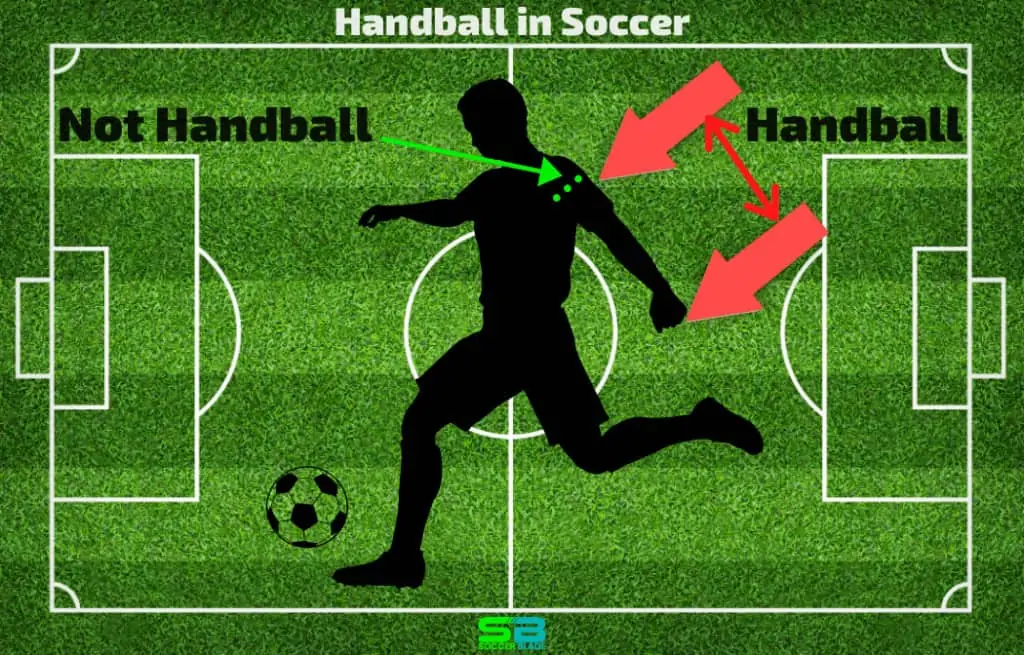
Penalty kick laws of the game
The ball must be in play for a penalty to be awarded and the following offenses can cause a penalty kick to be awarded, from the lawmakers at FIFA/IFAB;
Rules for causing a penalty kick;
- Pushing
- Jumping/charging at
- Kicks or attempting
- Hitting or headbutting
- Reckless play
- Aggressive force
- Holding/Impeding
- Biting or spitting
- Throwing an object
Rules for Hand Ball;
- Deliberate – moving your arm towards the ball
- Creating a goal-scoring chance
- Arms are in an unnatural position
- Arms above the shoulder
Not a Penalty;
- You head the ball and hits your hand
- From another player who’s close to you
- When the arm is close to the body
- A player is on the ground and their arm is supporting them
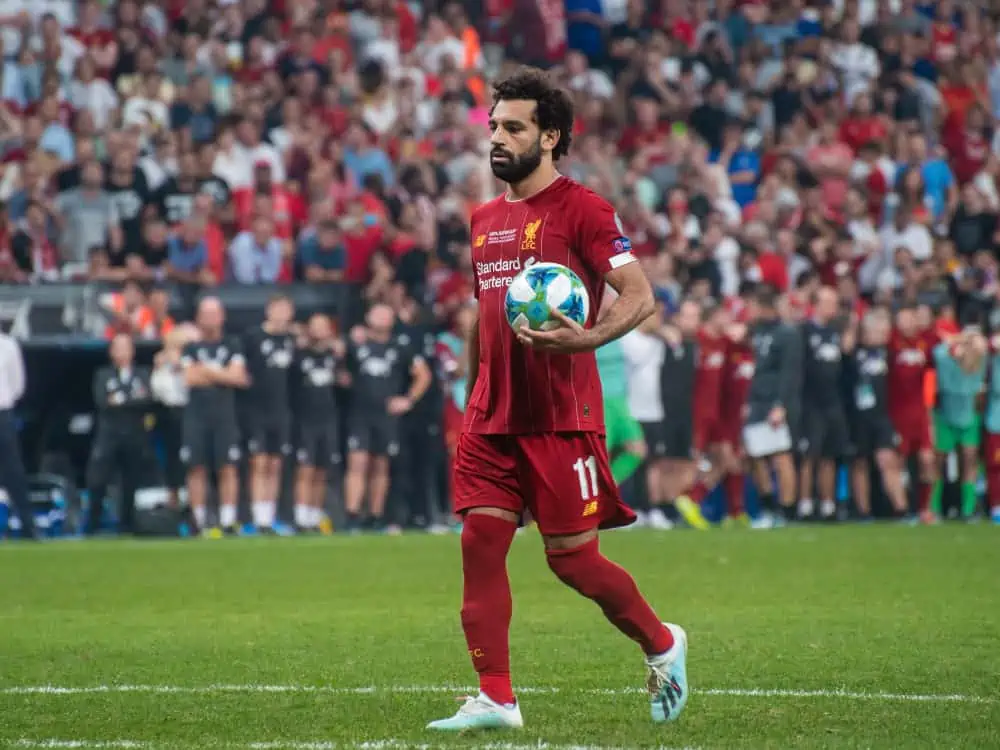
Steps To Take A Penalty Kick
- A penalty is taken from the penalty spot, no matter where in the penalty box the foul occurs. The penalty spot is located 12 yards from the center of the goal line in the middle of the penalty box.
- The designated taker must identify themselves to the referee.
- Only the goalkeeper and the taker are permitted to be in the penalty box before the penalty is taken.
- All other players must wait outside the box until the PK is taken.
- The GK may not step off the goal line, but they can move laterally along it.
- The referee blows the whistle to indicate that the kick can be taken.
- The kicker can dummy run during, but cannot stop their run-up once it’s begun.
- The ball must be kicked forward.
- Once the ball is touched, the penalty is officially taken, and the other players can enter the penalty box.
- The kicker cannot touch the ball after taking the penalty until another player touches it or it goes out of play. Therefore, the kicker may not score the rebound directly if the ball rebounds off the post or crossbar.
- Passing a penalty is legal, but the above rules still apply. The defending players have as much of a chance in getting to a passed penalty as the attacking team, so it’s a risky maneuver.
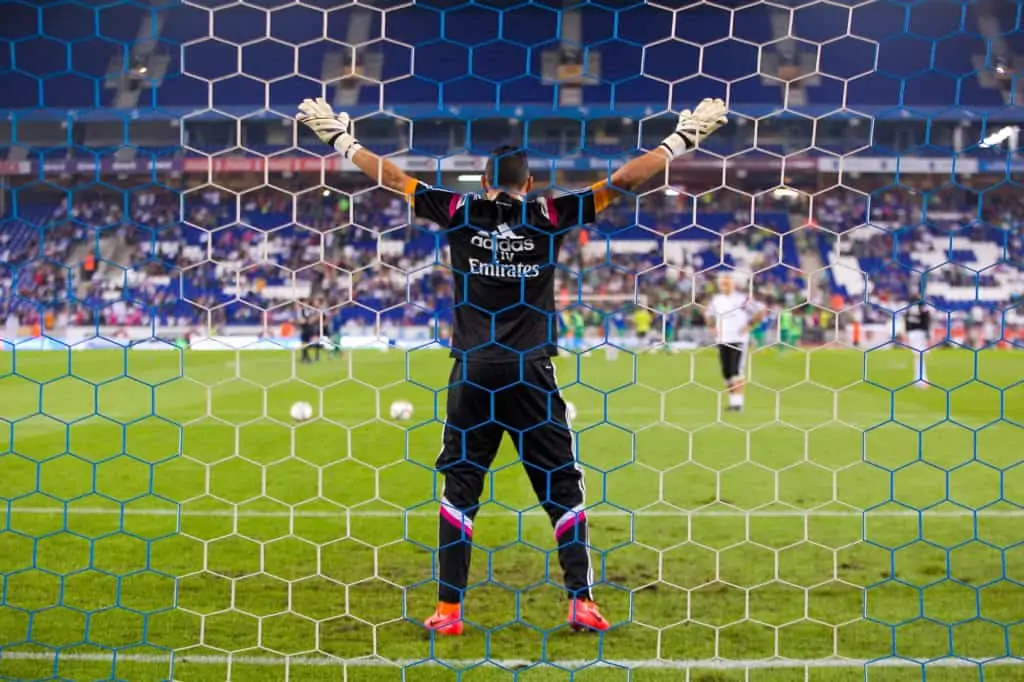
How to Take a Penalty Kick in Soccer: Technique
Many penalty techniques are used, ranging from a classic low and hard drive to the audaciously cheeky “panenka”.
From a defensive standpoint, there are also many techniques for saving penalties, although statistically, penalties are very difficult to save.
Some goalkeepers guess which side to dive before the penalty is taken, while others try to read the body language of the kicker.
Some ‘keepers wait until the penalty is taken before moving, and some goalkeepers try to distract their opponents by waving their arms or pointing.
Look at some of the great and not-so-great penalties throughout the years.
Penalty Kick Shootouts: What Happens
Competitive soccer games are usually played in a league or knockout format. For league formats, if a game ends in a tie, each team is awarded 1 point.
In a knockout format, where the game must have a winner, a penalty shootout is generally the decider if a game ends in a tie.
For the most part, when a game ends in a tie after 90 minutes, an extra 30 minutes (2 halves of 15 minutes) are played to determine a winner. If extra time cannot separate the teams, a penalty shootout occurs.
The earliest documented penalty shootout dates back to 1952 in the Yugoslav cup. Thousands more have taken place ever since. There are fewer more exciting and nerve-racking scenarios in soccer.
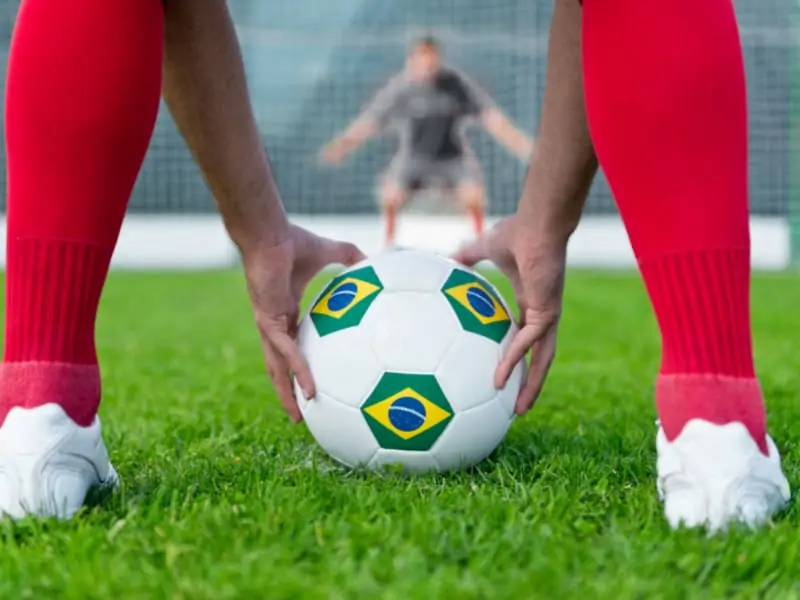
Penalty Kick Shootout Rules: How it Works
- The shootout is the best of 5 penalty kicks.
- A coin is flipped to decide which end the kicks will be taken.
- A coin is then flipped to determine who takes the first kick.
- All players other than the taker and the goalkeepers stand at the center circle of the field.
- Each team takes 1 penalty each, then a second each, then a third, etc., until a winner out of 5 is determined.
- A different player must take each PK.
- Only players on the field at the end of the game are eligible to take a PK. Subs or players sent off during the game are not permitted to take a PK.
- The ball may only be kicked once – there are no rebounds.
- The shootout goes to sudden death if the scores are even after the pair of 5 penalties are taken.
- If the scores are even and all players have taken a PK, the order resets, and the shootout continues.
Penalty shootouts are viewed as tiebreakers, so none of the penalties scored in a shootout are registered as official goals, and they’re not added to the goal tally of the game.
For example, a game that ends in a shootout may be recorded as:
Although a huge element of skill is involved in winning a penalty shootout, due to the “one-chance, one-shot” nature of each penalty, there is quite a bit of luck involved.
The weather, field conditions, a slip, or a lucky guess from the goalkeeper, amongst other factors, can impact the outcome of a PK.
Soccer Games That Ended in a Penalty Kick Shootout
That being said, few moments can match the thrill and drama of a shootout. It’s a thrilling way to end a game.
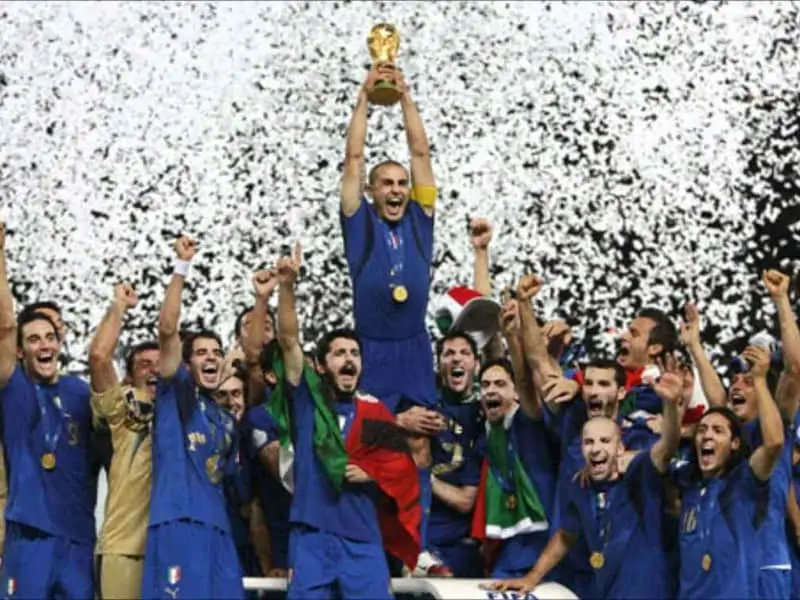
Penalty shootouts have determined many finals. Some of the most notable international competitions decided by PKs are:
- 1994 World Cup Final: Brazil 3-2 Italy
- 1999 Women’s World Cup Final: USA 5-4 China
- 2006 World Cup Final: Italy 5-3 France
- 2011 Women’s World Cup Final: Japan 3-1 the USA
History of the Penalty Kick
In 1882, a law was introduced whereby a team was awarded a goal if they were prevented from scoring by a handball. This was to punish egregious defensive tactics that were previously gotten away with.
Although this rule only lasted a single season, it was the catalyst for implementing the original penalty rule.
Why was the penalty kick invented?
The invention of the PK is largely credited to the former goalkeeper, William McCrum, from Armagh, Ireland. In 1890, he, along with the Irish Football Association, brought forward the idea to the IFAB (International Football Association Board) at a meeting.
However, they deferred deliberation on the rule for next year’s meeting.
Two major incidents of handball occurred the following season in the quarter-final stages of the English and Scottish cups. In either game, blatant handballs prevented goals from being scored.
These incidents further helped the Irish FA with their argument about why penalties needed to be introduced for such infractions.
Penalty Kick Old Rules and History
On June 2nd, 1891, the kick law in the history of soccer was introduced as the first penalty. However, it was far from the rule of today. In summary:
- Infringements such as tripping, holding down, or deliberate handballs within 12 yards from the defending player’s goalline (there were no penalty boxes at this time), upon appeal, resulted in the referee awarding a penalty kick to the team whom the foul was committed against.
- The PK could be taken from any position 12 yards from the goal line.
- All players other than the PK taker and the goalkeeper had to stand at least 6 yards behind the ball.
- The player could dribble the ball rather than simply strike it.
- A kick could be struck in any direction.
- The goalkeeper could stand up to 6 yards off his/her goal line.
- The ball was ruled in play as soon as the kick was taken.
Two significant adaptations were added to the rule shortly after its introduction, most notably:
- The player could no longer dribble the ball to take the kick. As soon as the ball was touched, the taker could no longer kick it again until another player touched it.
- The ball had to be kicked forward, and the requirement for a penalty appeal was removed.
Over the following century, gradual changes were continually made, bringing PKs to where they’re today.
PKs didn’t always exist, however. They were first introduced in 1890. Since then, we’ve seen many changes in what warrants a penalty and repercussions.
The rules surrounding the taking and saving penalties and different techniques and methods of shooting them. Let’s take a look at all you need to know.
Soccer Penalty Kicks and The Future
PKs are crucial to the game of soccer. Over the years, the rules and governing of the game have developed to the point where they’re unlikely to change significantly in the future.
In the last couple of years, the introduction of VAR (video assistant referee) has scrutinized referees and their decisions.
There have been several high-profile penalty incidents that have caused controversy in the VAR era. However, the issues do not lie with the penalties themselves.
With the reasons behind awarding them and the teething problems that the sport is enduring with the introduction of technology.
Drama
Penalties, by their very nature, are dramatic and controversial. That’s unlikely ever to change. Although luck plays a big part, penalty shootouts provide some of the most thrilling moments in every competition.
The cruelty of a crushing shootout defeat can only be overcome by the relief and joy experienced by winning one.
Here’s to many more moments of hysteria, nervous excitement, agony, thrills, and everything that comes with penalties and penalty shootouts.
Best Soccer Penalties
Penalty FAQs
What percentage of penalties are scored?
The average scoring percentage of penalties is 75%.
Who’s the best penalty taker ever?
Some of the best players at taking penalty kicks: Matt Le Tissier, Andrea Pirlo, Zinedine Zidane, Cristiano Ronaldo, Alessandro Del Piero, Alan Shearer, Johan Cruyff, and Eric Cantona, to name a few.
What’re the most penalties ever awarded in a single game?
The 1999 Copa America game between Colombia and Argentina holds this record. 5 penalties were awarded. That game also holds another record: Martin Palermo (Argentina) missed all three of his PKs, the most ever missed in a single game. Colombia won the game 3-0.
What’s the longest PK shootout ever?
48 penalties were taken in a shootout between KK Palace and Civics in the 2005 Namibian cup. The final score was 17-16, with KK Palace winning. The highest-scoring shootout occurred in Argentina between Argentinos Juniors and Racing Club, where Argentinos Juniors won 20-19, after 44 penalties.
Share the post "What is a Penalty Kick in Soccer? (Must-Know Rules)"
Joel is a seasoned soccer journalist and analyst with many years of experience in the field. Joel specializes in game analysis, player profiles, transfer news, and has a keen eye for the tactical nuances of the game. He played at various levels in the game and coached teams - he is happy to share his insight with you.



